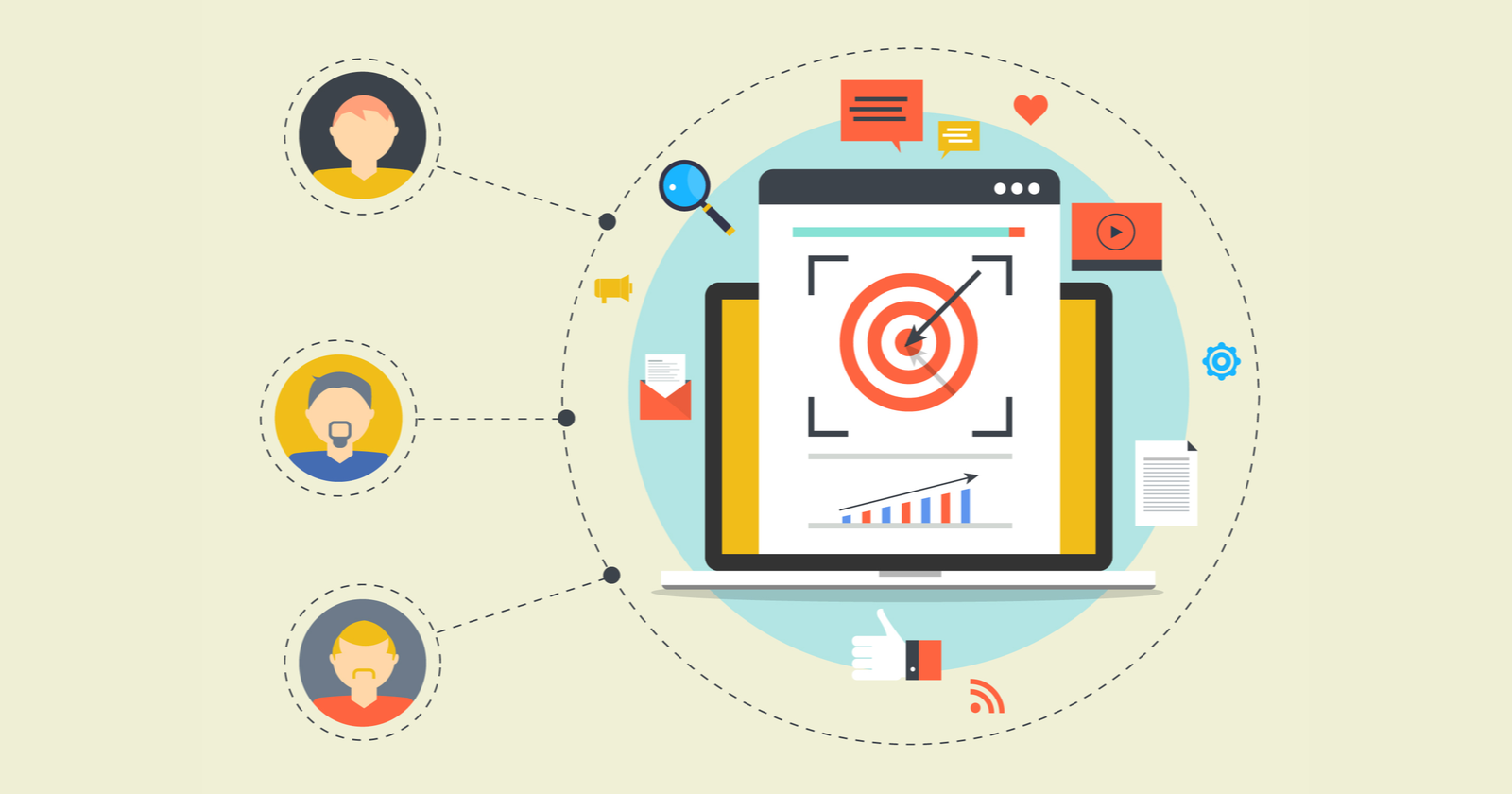
How AI Marketing Tools Drive Success in Singapore
September 19, 2025
How ABM Tools and Technology Streamline Marketing Efforts
September 19, 2025In the digital age, B2B lead generation has become more challenging than ever before. With the rise of the internet, social media, and other digital channels, businesses now have access to an unprecedented amount of data and information about their target customers. However, with so much noise and competition, it can be difficult to stand out and generate high-quality leads that convert into paying customers.

To help you succeed in the digital age of B2B lead generation, we’ve put together some tips and best practices that can help you attract, engage, and convert your target customers into qualified leads.
- Develop a clear target audience
In B2B lead generation, identifying your target audience is critical for success. It’s important to understand who your ideal customer is, what their needs and pain points are, and how your product or service can solve their problems. Developing a clear target audience is essential to creating effective marketing strategies and generating high-quality leads.
Here are some tips:
1. Research Your Ideal Customer
Before you can develop a clear target audience, you need to know who your ideal customer is. You can start by researching your existing customers to find commonalities in their demographics, behaviors, and pain points. Conduct surveys and interviews to gather feedback on your product or service and identify areas for improvement. Use this information to create buyer personas that represent your ideal customer.
2. Define Your Ideal Customer’s Needs
Once you have a clear understanding of your ideal customer, you need to identify their needs and pain points. What problems are they facing that your product or service can solve? What are their goals and objectives? Understanding these factors will help you tailor your messaging to their needs and create content that speaks directly to their pain points.
3. Determine Your Unique Selling Proposition
Your unique selling proposition (USP) is what sets you apart from your competitors. It’s the reason why your ideal customer should choose your product or service over others. Identify your USP and use it to differentiate yourself in the market. Highlight this in your messaging and make it clear to your target audience why they should choose you.
4. Create a Targeted Marketing Strategy
Once you have a clear understanding of your ideal customer, their needs, and your USP, it’s time to create a targeted marketing strategy. Use this information to develop messaging that speaks directly to your target audience. Create content that addresses their pain points and offers solutions to their problems. Use targeted advertising and outreach to reach your ideal customer and generate high-quality leads.
5. Measure Your Success
Finally, it’s important to measure the success of your lead generation efforts. Use analytics to track the success of your marketing campaigns and adjust your strategy accordingly. Continually analyze your data and make changes to improve your results.
In conclusion, developing a clear target audience is essential to B2B lead generation. By researching your ideal customer, defining their needs, determining your USP, creating a targeted marketing strategy, and measuring your success, you can generate high-quality leads and grow your business. Keep these tips in mind as you develop your lead generation strategy and you’ll be well on your way to success.

- Use data and analytics to optimize your marketing efforts
In today’s competitive B2B market, it’s not enough to simply generate leads; you need to optimize your marketing efforts to ensure that you’re attracting the right leads and converting them into paying customers. To do this, businesses must rely on data and analytics to gain insights into their target audience and improve their marketing strategies.
Here are some tips:
1. Identify Your Target Audience
The first step in optimizing your B2B lead generation is to identify your target audience. You need to know who your ideal customer is, what their pain points are, and how your product or service can solve their problems.
Using data and analytics, you can analyze your website traffic, social media followers, and email subscribers to gain insights into your audience’s behavior and interests. By understanding your target audience, you can create personalized marketing campaigns that resonate with them and drive more leads.
2. Analyze Your Marketing Channels
Once you have identified your target audience, you need to analyze your marketing channels to determine which ones are driving the most traffic and leads. By analyzing your website analytics, social media insights, and email marketing data, you can see which channels are performing well and which ones need improvement.
For example, if you notice that most of your leads are coming from LinkedIn, you may want to allocate more resources to LinkedIn marketing campaigns. Alternatively, if your email campaigns are not generating many leads, you may need to optimize your email content or change your strategy altogether.
3. Measure Your ROI
It’s essential to measure the ROI of your marketing efforts to determine which campaigns are generating the most revenue. By tracking your sales pipeline and lead conversion rates, you can see which campaigns are contributing to your bottom line and which ones are not.
You can also use analytics to track customer behavior and engagement, such as website visits, page views, and click-through rates. This information can help you make informed decisions about which marketing campaigns to invest in and which ones to abandon.
4. Optimize Your Website
Your website is often the first point of contact between your business and potential customers. Therefore, it’s crucial to optimize your website to ensure that it’s easy to navigate, user-friendly, and provides valuable information to your target audience.
Using data and analytics, you can analyze your website’s traffic and behavior to identify areas for improvement. For example, you may notice that visitors are leaving your website after only a few seconds. In this case, you may need to optimize your website’s loading speed, improve the layout, or add more engaging content.
In conclusion, using data and analytics is critical to optimizing your B2B lead generation efforts. By understanding your target audience, analyzing your marketing channels, measuring your ROI, and optimizing your website, you can improve your marketing campaigns and drive more leads. With the right data and analytics tools, you can make informed decisions that will help your business grow and succeed.
5. Leverage social media to connect with your target audience
Social media platforms like LinkedIn, Twitter, and Facebook can be powerful tools for B2B lead generation. By using social media to connect with your target audience, you can build relationships and engage in conversations that can lead to valuable leads and sales.
To succeed on social media, it’s important to develop a clear strategy and plan for your social media marketing efforts. This means identifying the channels and tactics that are most effective for reaching your target audience, creating content that resonates with your audience, and engaging in conversations and interactions that build trust and credibility.
- Create valuable content that resonates with your target audience
In the world of B2B lead generation, creating valuable content that resonates with your target audience is critical. It’s not enough to simply create content and hope that it will attract leads. You need to create content that speaks directly to your audience’s needs, interests, and pain points, and provides them with actionable insights that they can use to improve their business.
Here are some tips for creating valuable content that resonates with your target audience in B2B lead generation:
1. Understand your audience: Before you start creating content, you need to understand your audience. Who are they? What are their pain points? What are their goals and aspirations? What challenges do they face in their industry? Once you have a clear understanding of your audience, you can create content that speaks directly to their needs.
2. Focus on quality: Quality is key when it comes to B2B content. Your content should be well-researched, informative, and engaging. Avoid fluff and filler content and focus on providing actionable insights that your audience can use.
3. Use data to inform your content: Data can be a powerful tool in creating valuable content that resonates with your audience. Use data to identify trends in your industry, and use this information to create content that addresses these trends. This will not only help your content stand out, but it will also demonstrate your expertise in your industry.
4. Use a variety of content formats: B2B audiences consume content in many different ways. Some prefer written content, while others prefer video or audio content. Use a variety of content formats to appeal to different preferences and make your content more accessible.
5. Collaborate with influencers: Influencers can be a great resource for creating valuable content that resonates with your target audience. Collaborate with influencers in your industry to create content that provides unique insights and perspectives.
6. Promote your content: Creating valuable content is only half the battle. You also need to promote your content to ensure that it reaches your target audience. Use social media, email marketing, and other channels to promote your content and drive traffic to your website.


